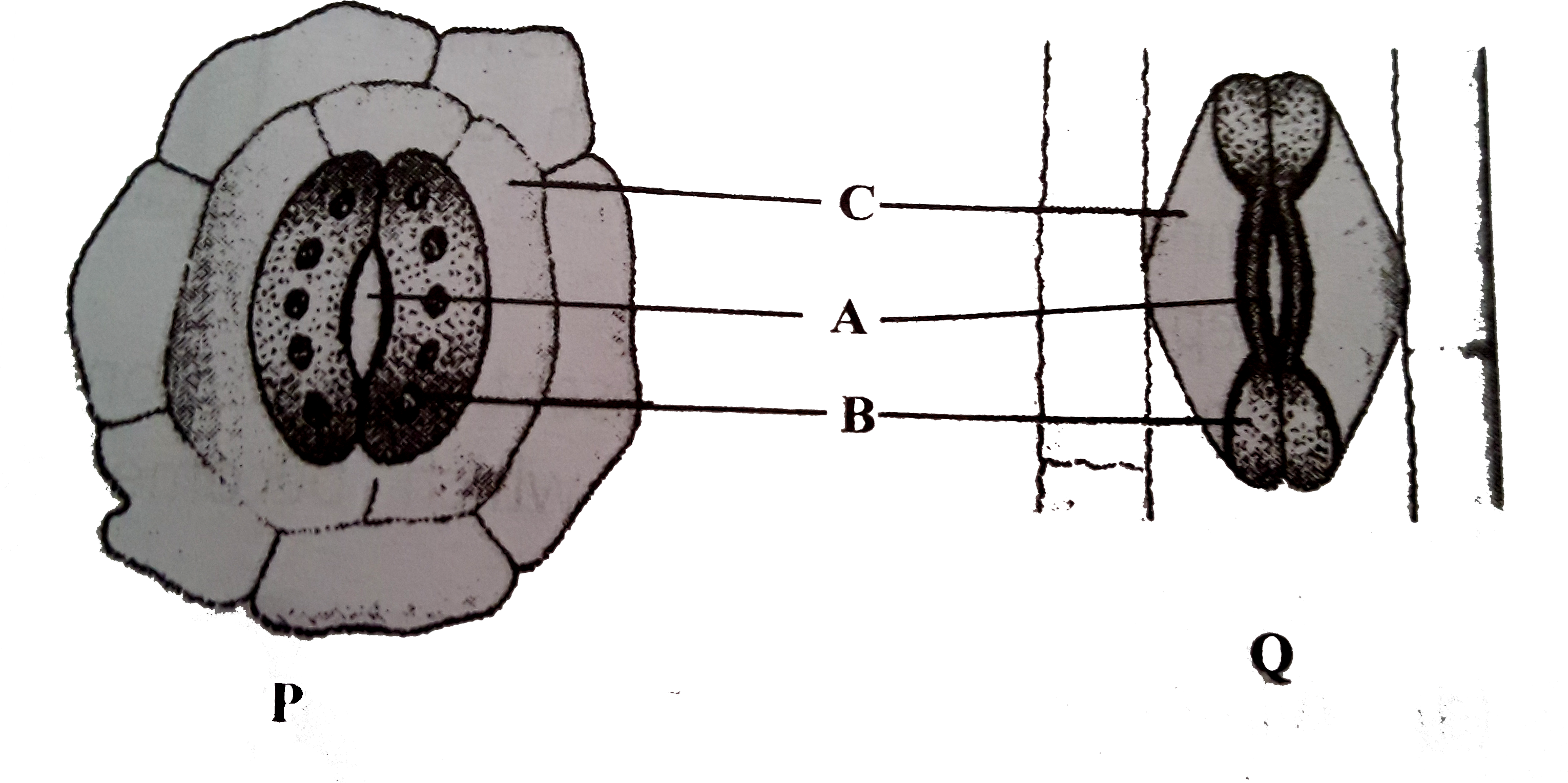The stomatal apparatus includes -
Only stomatal aperture
Stomatal aperture and guard cells
Only guard cells
Stomatal aperture, guard cells and surrounding subsidiary cells
The correct Answer is:D
To answer the question regarding the components of the stomatal apparatus, we can break down the information step by step.
1. Understanding the Stomatal Apparatus: The stomatal apparatus is a structure found in the epidermis of leaves and stems that facilitates gas exchange. It primarily consists of various components that work together to regulate the opening and closing of stomata.
2. Identifying the Main Components:
- Stomatal Pore: This is the opening that allows gases (like CO2 and O2) to enter and exit the leaf.
- Guard Cells: These are specialized cells that surround the stomatal pore. They control the size of the pore by changing shape, thus regulating gas exchange and water loss.
- Subsidiary Cells: These are the cells that are located adjacent to the guard cells. They provide support and may assist in the functioning of the guard cells.
3. Distinguishing Between Components:
- The guard cells are specifically responsible for the opening and closing of the stomatal pore.
- The subsidiary cells help in the functioning of guard cells but are not directly involved in the gas exchange process.
- The epidermal cells are present on the outer layer but are not considered part of the stomatal apparatus itself.
4. Conclusion: Based on the components identified, the stomatal apparatus includes the stomatal pore, guard cells, and subsidiary cells. Therefore, the correct answer to the question is that the stomatal apparatus includes both the guard cells and the stomatal pore.
Final Answer:
The stomatal apparatus includes the stomatal pore, guard cells, and subsidiary cells.
- Stomatal Pore: This is the opening that allows gases (like CO2 and O2) to enter and exit the leaf.
- Guard Cells: These are specialized cells that surround the stomatal pore. They control the size of the pore by changing shape, thus regulating gas exchange and water loss.
- Subsidiary Cells: These are the cells that are located adjacent to the guard cells. They provide support and may assist in the functioning of the guard cells.
- The guard cells are specifically responsible for the opening and closing of the stomatal pore.
- The subsidiary cells help in the functioning of guard cells but are not directly involved in the gas exchange process.
- The epidermal cells are present on the outer layer but are not considered part of the stomatal apparatus itself.
The stomatal apparatus includes the stomatal pore, guard cells, and subsidiary cells.
Similar Questions
Knowledge Check
In the sketch of the stomatal apparatus given alongside, which one of the following is missing ?
 ACell membranes of the cellsBCell walls of the cellsCNuclei in the guard cellsDChloroplasts in the guard cells
ACell membranes of the cellsBCell walls of the cellsCNuclei in the guard cellsDChloroplasts in the guard cellsThe given diagram represents stomatal apparatus in dicots and monocots. Identify A, B and C.
 AA-Epidermal cells, B - Subsidiary cells, C-Guard cellsBA-Guard cells, B - Subsidiary cells, C-Epidermal cellsCA-Guard cells, B - Epidermal cells, C-Subsidiary cellsDA-Subsidiary cells, B - Epidermal cells, C-Guard cells
AA-Epidermal cells, B - Subsidiary cells, C-Guard cellsBA-Guard cells, B - Subsidiary cells, C-Epidermal cellsCA-Guard cells, B - Epidermal cells, C-Subsidiary cellsDA-Subsidiary cells, B - Epidermal cells, C-Guard cellsIn a stomatal apparatus , cellulosic microfibril are oriented
ALongitudinally on subsidiary cellsBRadially in the cell walls of guard cellsCRadially and longitudinally in wall of guard cellsDLongitudinally on both guard cells
Golgi apparatus
View SolutionGiven below is the diagram of a stomatal apparatus in which of the following all the four poarts labelled as A,B,C and D are correctly indentified?

View Solution
Given figures (P and Q) represent the stomatal apparatus of dicot and monocot leaves respectively. Select the option which correctly labels A, B and C
View SolutionThe following fiure represetn the stomatal apparautus

View SolutionGolgi apparatus
View Solution

 Choose the CORRECT combination.
Choose the CORRECT combination.